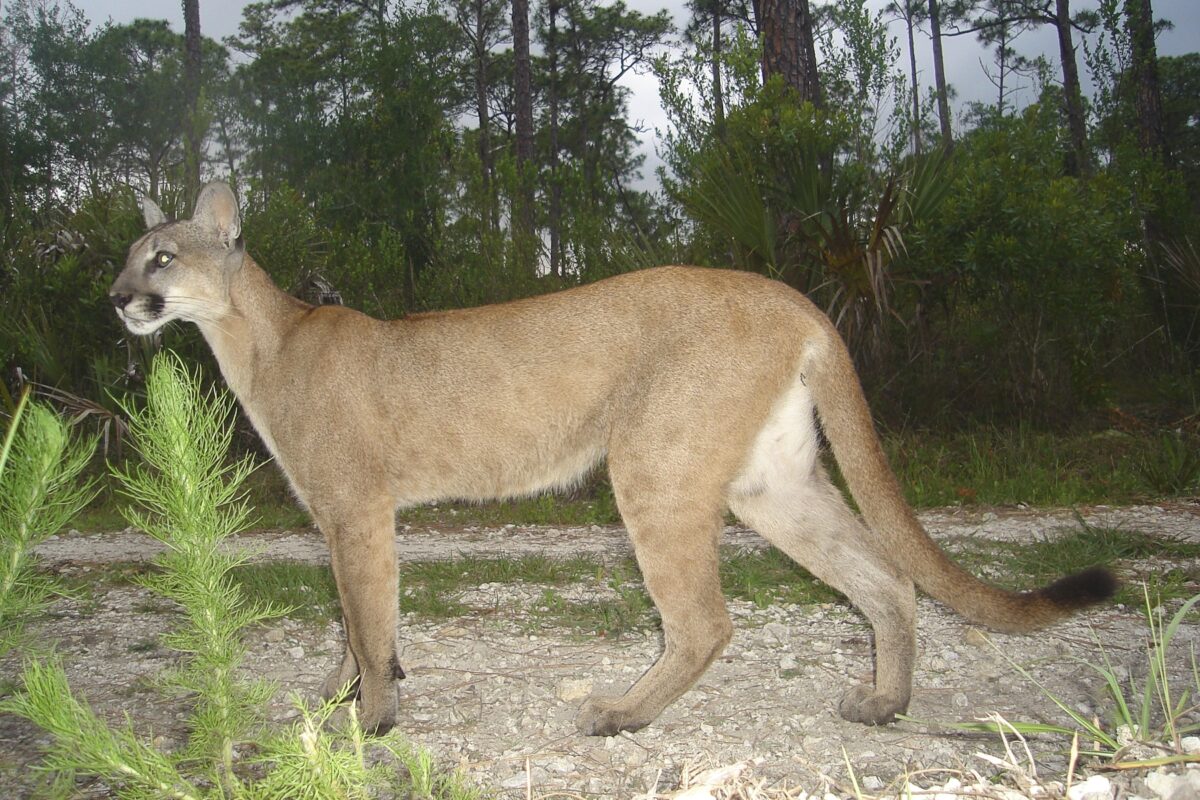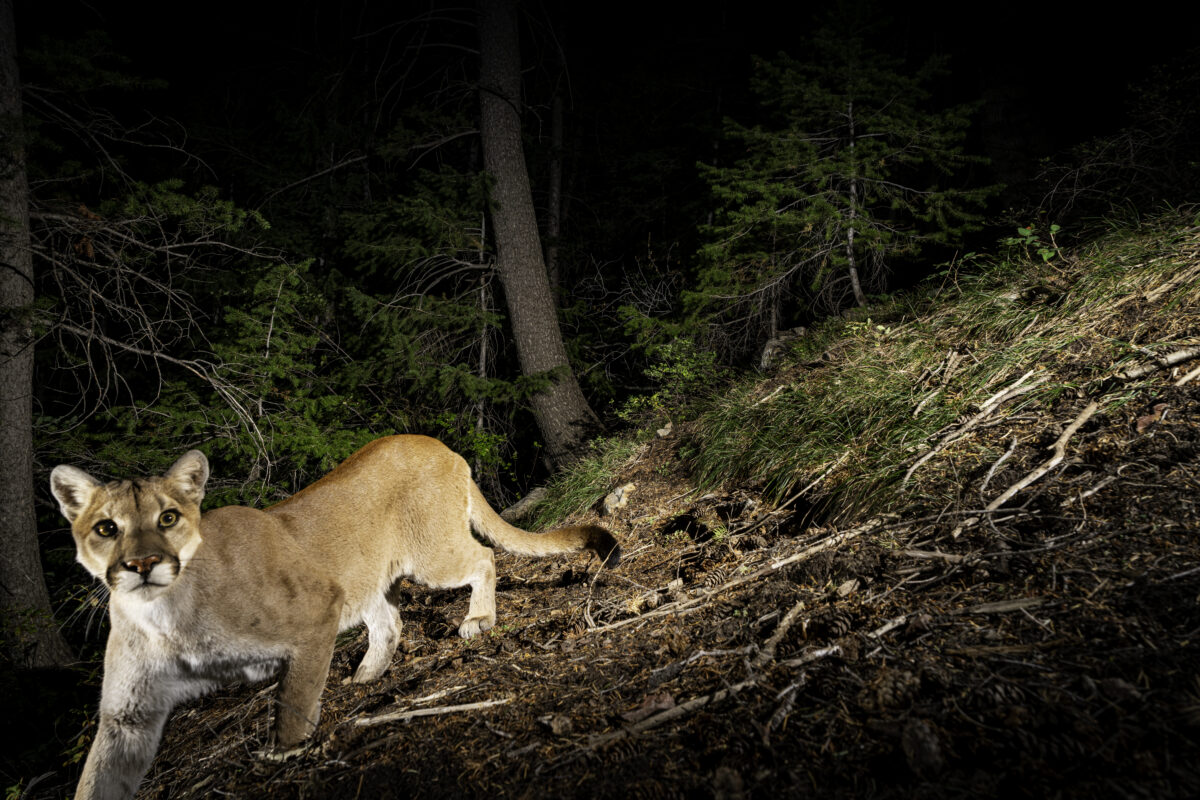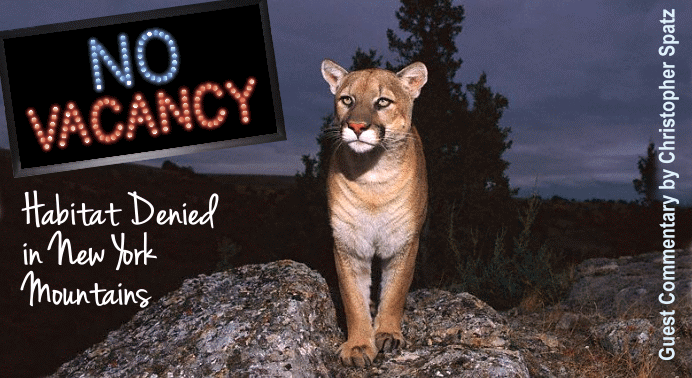
Guest Commentary by Christopher Spatz, President of the Cougar Rewilding Foundation
Despite the Cougar Rewilding Foundation’s best, peer-reviewed efforts to keep everyone (more than half of our update recipients are academics or resource professionals) honest, we hear this reflexively from eastern game agencies, from state wildlife officials with no alpha predator experience, from biologists without cougar research credentials, that the East is too developed, too populated to support big predators.
“It is unlikely that any eastern state will reintroduce cougars; the required habitat is simply not available.”Eastern Cougar Fact Sheet, New York State Department of Environmental Conservation
Public wildlife servants, those established as authorities by their own departments — both civil and academic — the state experts sought by both media sources and citizens to answer their eastern cougar questions, remain a full generation behind wolf and cougar developments in the field.
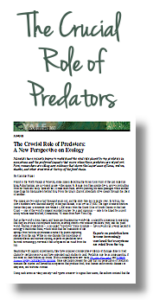 It’s certainly not news that a region of mixed forest and farming habitat in northern Minnesota (like New York’s Adirondacks) has coexisted for decades with 3,000 wolves (nearly twice as many at the start of the slaughter in the Northern Rockies after ESA delisting), or that California supports breeding populations of cougars at the very edges of the Bay Area, Los Angeles and San Diego.
It’s certainly not news that a region of mixed forest and farming habitat in northern Minnesota (like New York’s Adirondacks) has coexisted for decades with 3,000 wolves (nearly twice as many at the start of the slaughter in the Northern Rockies after ESA delisting), or that California supports breeding populations of cougars at the very edges of the Bay Area, Los Angeles and San Diego.
But perhaps we shouldn’t be surprised by such institutional senescence when the New York State Department of Environmental Conservation’s fact sheet on the eastern cougar contains just four citations, all of them from the last century, and then some: one from 1968, two from the 1970s, and the  most recent, from 1993 — which is almost funny if it weren’t so negligent (I’ve left messages and written politely to the NYSDEC about their fact sheet; no one has the courtesy to respond).
most recent, from 1993 — which is almost funny if it weren’t so negligent (I’ve left messages and written politely to the NYSDEC about their fact sheet; no one has the courtesy to respond).
Nor should we be surprised that two of those four obsolete references are from sportsmen’s guides, examples of what Mountain Lions in America fingers as the “huge conflict of interest” between state game agencies and whom they perceive as their primary constituents, spawning “a kind of self inflicted ignorance of cougar ecology.” When I worked in the psychiatric field, it was my professional responsibility to attend peer conferences and study the developing literature.
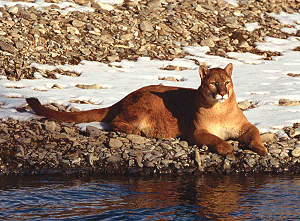
A similar professional obligation by eastern state wildlife representatives commenting officially on alpha predators appears not to be a requirement for the job (I’ve heard: “Who has time for research on absent predators amid such budget austerity?” Fair enough. Then don’t comment).
Instead of doing their homework, keeping up with the latest research (research less than two decades old), our civil wildlife servants entrusted with educa ting the public take the lazy route.
ting the public take the lazy route.
No need to spook hunters with talk of bringing back the “competition,” as if hunters don’t take exponentially more ungulates than big predators, as if predators haven’t coexisted in intimate balance with their prey for eons.
No need to keep up with ecosystem studies, those embattled life-webs missing their native shepherds and left ravaged by state-sponsored mismanagement of eastern state white-tail herds, those systems our public resource managers are hired to protect and preserve — for all.
No need to entertain informed debate on alpha predator recovery in the East, or survey the interest of the taxpayers (which keeps turning up big support for big predator recovery) providing their salaries.
 Nope, simply post outdated references to kids Googling their home
Nope, simply post outdated references to kids Googling their home
work on eastern cougars (most of the traffic to our website is from students; NYSDEC’s fact sheet appears first on search lists), and deny the potential for wolf and cougar recovery in the East out of self-inflicted ignorance.
In the spirit of education and public debate, we offer here three recent sources on the subject of cougar ecology:
-
- Earth Island Journal considers an eastern rewilding of absent megafauna, including cougars.
- Washington State University’s Large Carnivore Conservation Lab dials up a short summation in this video of 15 years of research on the failures of sport hunting and cougar management.
C’mon, NYSDEC. Join the 21st century. I’m paying you — $88 for my NYSDEC Super Sportsman’s license, nevermind my taxes — to do your homework.
You owe it to the kids. And, to the cats.
Honestly,
Christopher Spatz, President
Cougar Rewilding Foundation


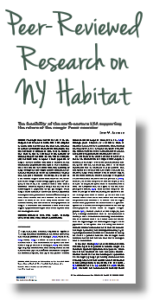

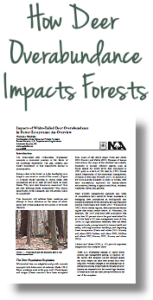
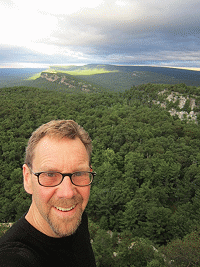

 Facebook
Facebook Twitter
Twitter Send Email
Send Email